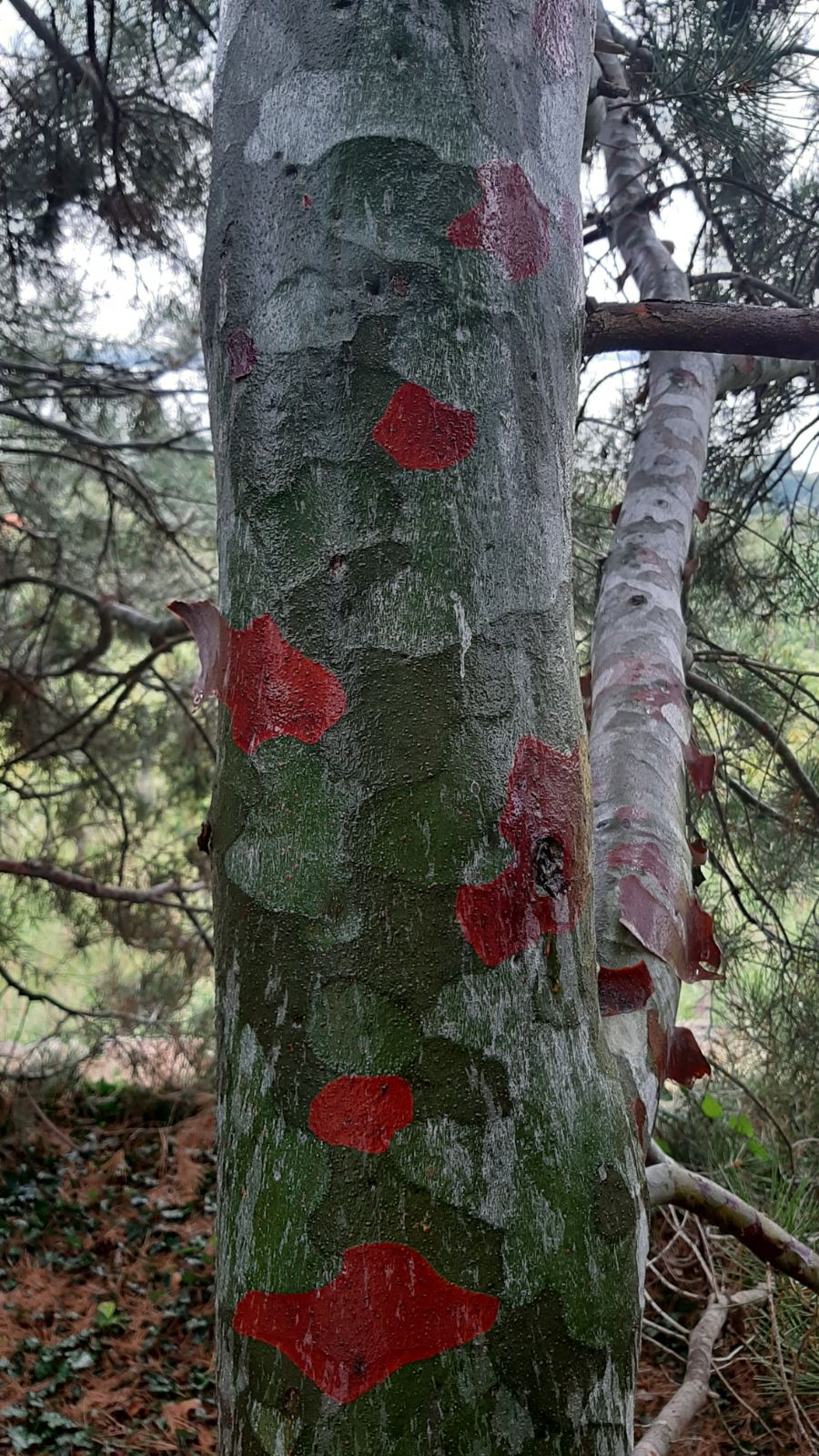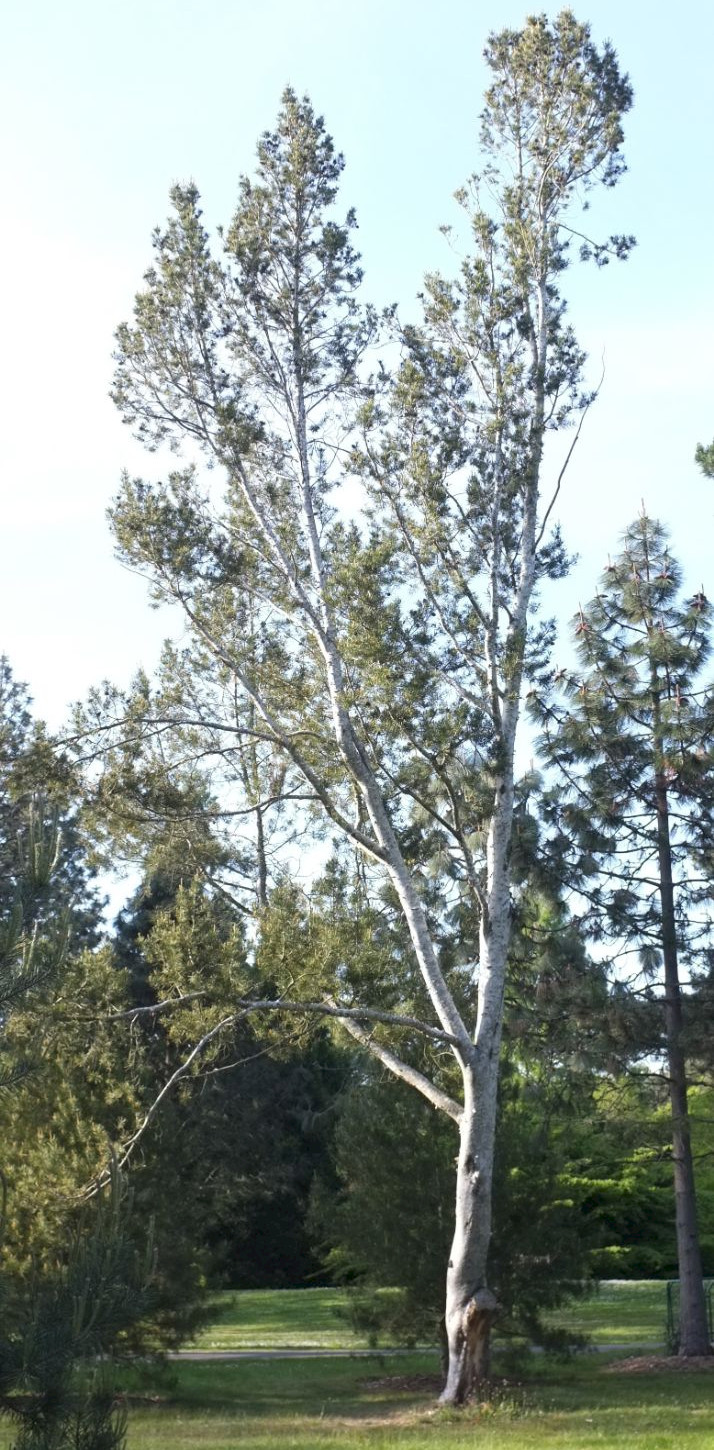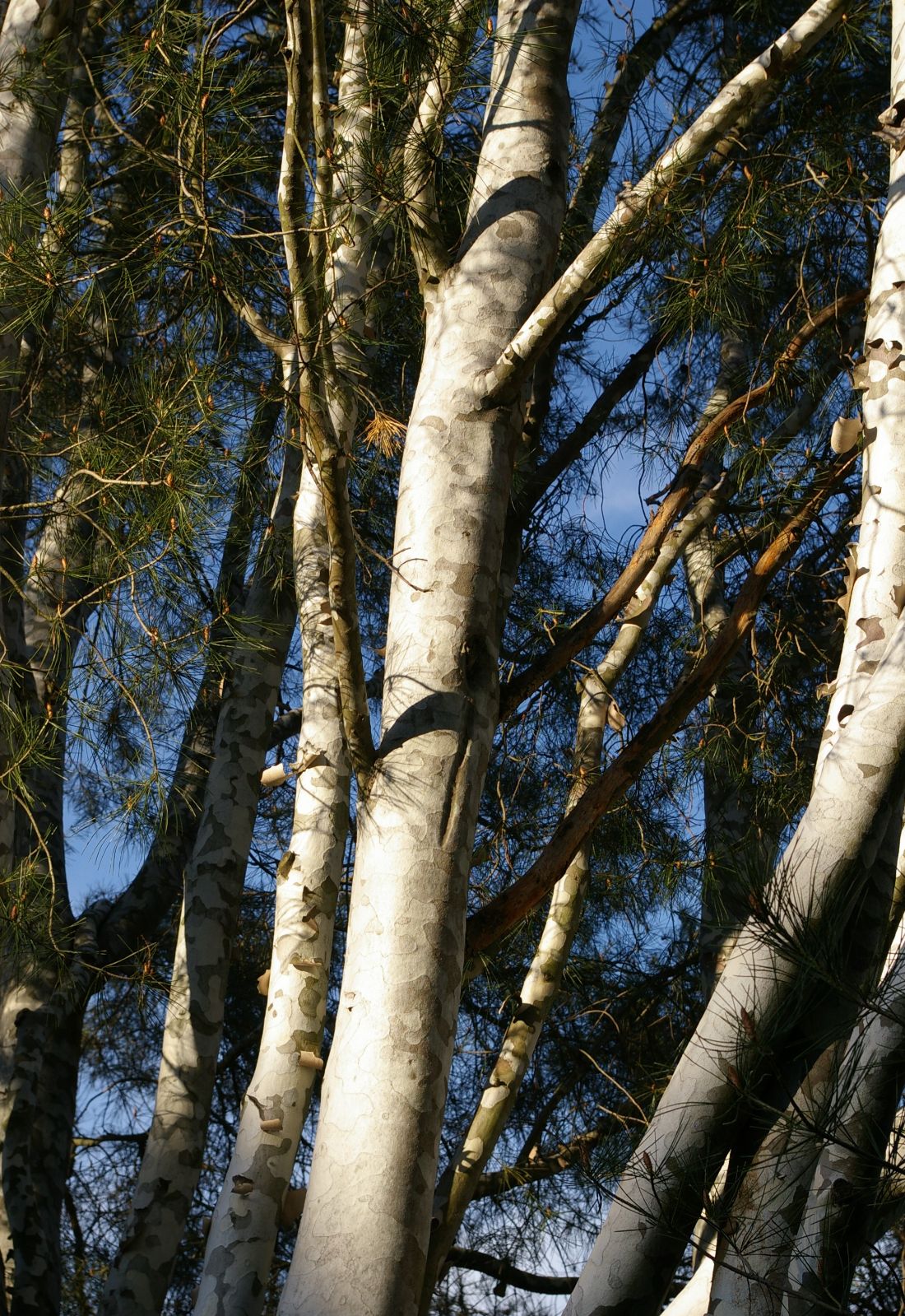Pinus bungeana
Credits
Article from Bean's Trees and Shrubs Hardy in the British Isles
Recommended citation
'Pinus bungeana' from the website Trees and Shrubs Online (treesandshrubsonline.
Genus
Common Names
- Lacebark Pine
Other taxa in genus
- Pinus albicaulis
- Pinus arizonica
- Pinus armandii
- Pinus attenuata
- Pinus ayacahuite
- Pinus balfouriana
- Pinus banksiana
- Pinus bhutanica
- Pinus brutia
- Pinus canariensis
- Pinus cembra
- Pinus cembroides
- Pinus chiapensis
- Pinus contorta
- Pinus coulteri
- Pinus culminicola
- Pinus densata
- Pinus densiflora
- Pinus devoniana
- Pinus durangensis
- Pinus echinata
- Pinus edulis
- Pinus elliottii
- Pinus engelmannii
- Pinus eremitana
- Pinus flexilis
- Pinus gerardiana
- Pinus greggii
- Pinus × hakkodensis
- Pinus halepensis
- Pinus hartwegii
- Pinus heldreichii
- Pinus henryi
- Pinus × holfordiana
- Pinus hwangshanensis
- Pinus jeffreyi
- Pinus johannis
- Pinus koraiensis
- Pinus lambertiana
- Pinus leiophylla
- Pinus longaeva
- Pinus massoniana
- Pinus maximartinezii
- Pinus monophylla
- Pinus montezumae
- Pinus monticola
- Pinus morrisonicola
- Pinus mugo
- Pinus muricata
- Pinus nelsonii
- Pinus nigra
- Pinus oocarpa
- Pinus orizabensis
- Pinus palustris
- Pinus parviflora
- Pinus patula
- Pinus peuce
- Pinus pinaster
- Pinus pinceana
- Pinus pinea
- Pinus ponderosa
- Pinus pseudostrobus
- Pinus pumila
- Pinus pungens
- Pinus quadrifolia
- Pinus radiata
- Pinus remota
- Pinus resinosa
- Pinus rigida
- Pinus roxburghii
- Pinus sabiniana
- Pinus serotina
- Pinus sibirica
- Pinus strobiformis
- Pinus strobus
- Pinus sylvestris
- Pinus tabuliformis
- Pinus taeda
- Pinus taiwanensis
- Pinus teocote
- Pinus thunbergii
- Pinus torreyana
- Pinus virginiana
- Pinus wallichiana
- Pinus wangii
- Pinus yunnanensis
A tree sometimes forming a rounded, bushy head, but frequently branching near the ground and forming several stems which grow erect to a height occasionally of 80 to 100 ft. The bark is smooth and peels off the trunk like that of a plane; in young specimens it is brown, but in old ones becomes quite white and gives to this pine its most remarkable character. Young shoots perfectly glabrous, shining, greyish green. Leaves in threes, persisting four or five years, about 3 in. long, two-edged, stiff, sharply pointed, bright green, very minutely toothed, marked all round with faint stomatic lines; leaf-sheath 1⁄2 to 3⁄4 in. long, soon falling. Cones 2 to 21⁄2 in. long, 11⁄4 to 11⁄2 in. wide, shortly stalked, the scales terminated by a decurved, triangular spine; seeds 1⁄3 in. long, with a short wing. Bot. Mag., t. 8240.
P. bungeana was described from a specimen collected by Bunge near Peking in 1831. In that region, and elsewhere in China, it was widely cultivated for its beautiful white bark, especially in the grounds of Buddhist temples. It is wild in the mountains west of Peking and thence south-eastward to Kansu and southward to Hupeh. It was introduced by Robert Fortune around 1846 to Glendinning’s nursery, but during that journey to China he only saw young nursery plants. But fifteen years later, in the mountains west of Peking, he found a tree with a thick trunk only 3 or 4 ft high, from which ‘some eight or ten branches sprang out, not branching or bending in the usual way, but rising perpendicularly, as straight as a Larch, to the height of 80 or 100 feet. The bark of the main stem and the secondary stems was of a milky-white colour, peeling like that of the Arbutus …’ He must have arranged for a further supply of seeds to be sent, for in 1864 he advertised seeds at 25 shillings an ounce, recently arrived from Peking ‘by the Overland Mail’ (Gard. Chron. (1864), p. 195).
P. bungeana is perfectly hardy, though rather slow growing. The bark on cultivated trees is not milky-white, and perhaps may never reach that stage in our climate. But it is beautifully marbled in various colours, yellowish when freshly exposed, darkening to greyish green or purplish brown. The oldest tree at Kew grows near the northern end of the Palm House; it is short-trunked, 43⁄4 ft in girth at the base, and a little over 30 ft high (1969). There is a group of taller trees, with well-developed main stems, growing in the Pinetum at the S.W. corner of the Lake, about 40 ft high. In the Pinetum of the Royal Horticultural Society at Wisley a tree c. 45 ft high is of very slender habit.
From the Supplement (Vol. V)
specimens: Kew, by Palm House, 38 × 4 ft at 3 ft (1981) and, in Pinetum, 52 × 4 ft (1980); R.H.S. Garden, Wisley, Surrey, 48 × 21⁄2 ft (1980); Nymans, Sussex, Wild Garden, 46 × 21⁄4 ft (1985); Antony House, Cornwall, pl. 1908, 43 × 23⁄4 ft (1978).



















